|

1. Karma
2. Kasaya
3. Lesya
Sramana Bhagvan Mahavira
attained to absoulte knowledge and gave a religious discourse for the first time. In the
beginning he said, ‘Uppannei va. vigamei va, dhuvei va (It comes into being, is
destroyed and remains steady.)
Bhagvan Mahavira laid the
foundation of the great and grand edifice of Jaina philosophy on these three word - utpata
(creation), vyaya (destruction) and dhaurya (permanence).
He said : ‘The
substance comes into being, the substance is destroyed, the substance remains
steady’.
Daily and regular change
takes place in every part of the substance. Every moment it comes into being, is destroyed
and remains steady also. The original form of a substance remains intact and impartite,
but its modes come into being and are destroyed. Creation, destruction and steadiness -
this threefold position is called ‘sat (existent). What is ‘sat’ is a
substance. For example, gold. The substance is not destroyed. the form of the substance
changes but the original substance remains as it is.
We feel that the soul dies.
In reality the soul never dies. The soul takes another birth. only its body changes. The
soul remains steady as a substance. It is idestructible and eternal.
The word - Jiva, Atma,
Cetana - are all synonymous. Jainism states that the soul has been bound by karma since
times immemorial. Subtle, deep and detailed discussions about the soul and karma are found
in Jainism.
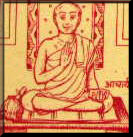 The
Nature of Jiva The
Nature of Jiva
That which
has inborn and natural feelings and activity is Jiva (the soul). It is chetana (sentient).
That which possesses the four chief instincts - the instinct of eating, the instinct of
fear, the instinct of copulation and the instinct of possession (mine-ness) and related
activities, is the Jiva (the soul).
When the soul appears one
with the body and is joined to it, the soul has the aforesaid 4 natural instincts and
activities. This is the external sign for recognizing the soul.
The soul has its internal
beauty also. It is manifested through experience, This internal beauty of the soul is
faultless and formless. It is free from karma. Essentially the soul is not a male, nor a
female and nor neuter. The soul has infinite knowledge, infinite perception and unlimited
happiness. These are its fundamental qualities. According to Jainism, the incomparable
beauty of the soul is enveloped by the cover of karma. The soul reaps fruits of the karmas
it accumulates. The soul experiences miseries of life and death because of karma. It
enjoys various types of happiness on account of karma. Nobody gives or can give happiness
or misery to the soul. It itself is the performer and the enjoyer or
sufferer.
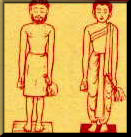 Nature of
Karma Nature of
Karma
The relation
between the soul and karma is beginingless but not endless. This beginning-less relation
can be ended for ever. Karma is matter (Pudgala). The body is material. Its cause is
karma.
Hence karma is also a
matter. The inherent causes of a material effect are a material. The earth is a matter, It
is elemental, so the object made from it must also be material/elemental.
Happiness is experienced by
means of agreeable material like food, etc. and unhappiness is experienced by being hit by
a weapon. Food and weapons are both material, so also karma; the cause of happiness and
misery is material.
The soul is bound by
fetters. It prattles, when liquor is consumed or becomes intoxicated. It becomes
unconscious by smelling chloroform. The fetters, liquor, chloroform, etc. are material
objects, inert objects. They affect the body, the mind and the soul.
Similarly by coming into contract with karma, which is inert matter, the
fundamental qualities like knowledge, perception, etc. of the soul are
covered and it experiences happiness and misery
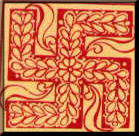 The Types
of Karma The Types
of Karma
Karma is not of
one type but of many types. There are 8 main types according to the effect produced. It is
called ‘Prakrtibandha’. The original Prakrtis of Karma are eight. Prakrti means
nature. Karma has nature of 8 types as follows :
1. Jnanavaraniya
Karma (Karma that obstructs knowledge):
The matter that obstructs the quality - knowledge of the soul is called jnanavaraniya
karma.
If there is a bandage over
the eye, nothing can be seen even if the eye is there. There is infinite knowledge in the
soul, but as long as this karma remains an obstruction over the soul, the soul cannot
obtain knowledge. This karma becomes an obstruction in obtaining knowledge. This karma is
of 5 types.
How is this Karma
formed ?
Jnanavaraniya karma is
formed in these six ways;
(1) by censuring knowledge and the learned.
(2) by showing hatred towards knowledge and the learned.
(3) by insulting knowledge and the learned.
(4) by forgetting the obligations of the learned.
(5) by quarrelling with the learned without any cause and
(6) by causing obstacles to the learner and the learned.
The Fruits of Karma
On account of this
Jnanavaraniya karma, the soul become deaf, dumb, or of retarded mind. It may not have pure
intellect and may not acquire the knowledge of the soul. Such are the fruits of this
karma.
2. Darsanavaraniya
karma (karma which obscures cognition) :
The matter which obscures the quality of infinte cognition of the soul, is called
‘Darsana-varaniya-karma’.
One cannot enter the area
guarded by a watchman. Similiarly this karma obscures the cognition of the soul. This
karma has nine types.
How is this karma
formed ?
Darsanavaraniya karma is
formed by censuring virtuous people, by showing contempt towards the virtuous and learned
people, by being ungrateful, by doubting the word of god and by creating obstructions in
religious practices.
The Fruits of this Karma
Because of darsanavarniya
karma the soul cannot see properly, can become blind, may be a victim of insomnia, may
sleep while sitting or moving, cannot see god, etc. These are the fruits of this karma.
3. Vedaniya Karma :
The matter which makes you
experience happiness and unhappiness, is called ‘Vedaniya karma’. This karma
resembles the edge of a sword. It honey is applies to the edge of a sword and if somebody
licks it, he experiences sweetness in the beginning but later on feels pain and misery on
account of the cut caused by the edge. If one licks the edge of a sword to which opium is
applied, he experiences bitterness first and pain later on.
One experiences happiness
and unhappiness also by this karma. This Karma has two varieties.
How is this Karma
formed ?
Satavedaniya karma is
accumulated by showing mercy to all living beings, by sharing the unhappiness of unhappy
people and reducing their misery.
Asatavendaniya karma is
accmulated by troubling and harming living beings and by becoming happy in their misery.
The Fruits of this Karma
Satavendaniya karma gives
pleasing and likeable enjoyments.
Asatavedaniya karma gives
miseries like poverty, disease, etc. in return.
4. Mohaniya Karma :
The matter which makes the soul passionate and deluded is called ‘Mohaniya
karma’.
A man taking narcotics
cannot have any sort of discretion. Similiarly on account of this karma, the soul forgets
itself and becomes attached to transient enjoyments.This karma has 28 varieties.
How is this Karma
formed ?
Mohaniya karma is
accumulated by outburst of too much anger, pride, deceit and greed; by practising
irreligion in the name of religion, by following bad conduct, by committing adultery etc.
Fruits of this Karma
Because of this karma, the
soul becomes deluded, excessively attached and passionate. It becomes jealous,
quarrelsome, deceitful and hypocritial. It becomes frightened without reason or with
reason and full of sorrow, etc.
5. Ayusya Karma :
The matter which creates
life is called Ayusya Karma. This karma resembles a prison. A man imprisoned in a jail
cannot go or come according to his desire. Similiarly, the soul remains imprisoned in the
prison in the form of the body on account of this karma.
This karma has 4 types.
How is this Karma
formed ?
1. By taking those
professions wherein living beings are killed every moment; 2. By hoarding; 3. By
meat-eating; 4. A soul goes to the hell by killing a living being having 5. Senses.
2. A living being goes to
the tiryanca birth i.e. gets the birth of an animal or a bird by 1. telling lies
deceitfully 2. by treachery 3. by telling lies; 4. by using wrong scales.
3. A living being, who is
(1) naturally free from fraud, (2) who is courteous by nature, (3) merciful and free from
jealousy, gets the birth of a human being.
4. A living being gets the
birth of a god i.e. he becomes a god, a goddess, an Indra or an Indrani by 1. observing
self-control after initiation, 2. by observing the 12 vows as a house holder, 3. by
performing penances and 4. by enduring pain with quanimity.
The fruits of this karma
With the accmulation of
karma as said above, the soul enjoys various kinds of fruits.
6. Namakarma :
That matter (pudgala) on account of
which various materials of life become available, is called ‘Namakaram’. This
karma is like a painter. Just as a painter paints various types of pictures with a pencil
or a brush, so the soul assumes bodies of various forms and shapes.This karma has 103
varieties.
How is this Karma
formed ?
Good ‘Namakarmas’
are accmulated by keeping the mind, speech and body straightforward and pure and by
behaving with love and friendliness with all. Bad ‘namakarmas’ are formed by
keeping the mind, words and body crooked and by quarrelling.
The Fruits of this Karma
By good namakarma, one gets
desired enjoyments, fame, beauty, happiness, health, etc.
By bad namakarma, scarcity,
bad feelings and pain are suffered. It also results in ill-fame, diseases, etc.
7. Gotra Karma :
This Karma has two types - higher and lower.
That pudgala (matter) by
the power of which, one attains to a higher family is higher ‘gotra karma’ and
that pudgala (matter) by the power of which, one is condemned to a lower family is called
lower ‘gotra karma’.
This Karma is like a
potter. Just as a potter makes utensils of various types from the same lump of clay,
similarly only one body (i.e. the same body) has experience of various types on account of
this karma.
How is this Karma
formed ?
Lower ‘Gotra
Karma’ is bound by showing pride and vanity in any one or more of these eight -
caste, fruit, stength, beauty, penances, knowledge, gain and lordliness.
By not showing pride in all
these things, higher ‘Gotra Karma’ is formed.
The furits of this Karma
are as follows :
By higher ‘Gotra
Karma’ one reaps good things. He gets birth in a happy, properous and cultured
family. He acquires beauty, strength and wealth. By lower ‘Gotra Karma’, he gets
the opposite of the above, viz., he gets birth in a lower caste and family. He also
suffers poverty, disease, ugliness etc.
8. Antaraya Karma :
The pudgala (matter) creating obstruction to active power is called ‘Antaraya’
(Obstacle) Karma’. This Karma is like a treasurer. The institution or the owner may
have sanctioned the amount to be given, but that amount can be collected only when the
treasurer gives it. Similarly, the soul has infinite powers and qualities, but they are
obstructed by this karma. This karma has 5 varieties.
How is this Karma
formed ?
This Antaraya Karma is
bound (1) by becoming an obstacle, when somebody is giving charitable gifts, (2) by coming
in the way of somebody’s gain; (3) by stopping somebody’s food and drink; and
(4) by stopping somebody from performance of religious mediation, etc.
The fruits of this
karma
On account of this Karma,
the person cannot give charitable gifts, cannot make gains, cannot enjoy various
enjoyments and cannot worship god.
As long as the soul is
concerned and connected with these eight karmas and their sub-divisions, the rebirth
connected with these eight karmas and their sub-divisions, the rebirth of the soul goes
on.
Rebirth means constant
movement of the cycle of life and death.
"Liberation/Emancipation
is possible."
Man can free his soul from
karmas also. He can make his soul pure and unselfish by performing religious practices
like penances, renunciation detachment, knowledge, meditation, chanting of mantras, etc.
The soul can be liberated and enlightenced by destroying all karmas through ardent and
severe religious practices.
When the soul destroys all
karmas, it becomes god.
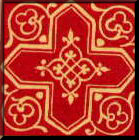 Kasaya
(Passion) Kasaya
(Passion)
The karmic
matter (Karma Pudgala) which produces attachment and hatred is ‘Kasaya’. Kasaya
is the main reason for the boundage of Karma.
There are two words :
Kasaya-Kasa and Aya. Kasa means the cycle of births (and deaths) and Aya means ‘that
which brings that about’.
That which brings about the
cycle or birth (and death) to the soul is called ‘Kasaya’.
There are two main
Kasayas-Raga (attachment) and Dvesa (hatred).
There are four types of
Kasaya in all.
This Kasaya is a mental
activity - a sort of excitement. Likes, dislikes, fear, sorrow, disgust, contempt,
laughter, etc. give rise to Kasayas.
The soul becomes sinful,
polluted by this Kasaya and is bound by Karma.
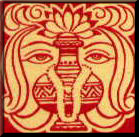 Subdivisions
of Kasayas Subdivisions
of Kasayas
Kasayas have
4 subdivisions by way of gradation.
1. Anantanubandhi -
The excitement which is produced
regularly and continuously and which is endlessly produced is called anantanubandhi. In
simple word this Kasaya is the most intense.
This anatanubandhi or most
powerful excitement is like a line on a stone. This line, once etched, remains there. It
cannot be erased. When Kasya is more intense, truth does not dawn on the mind of the
person. The person loses the desire for truth.
Because of this Kasaya,
right perception cannot be achieved.
2. Apratyakhyani - This is the second stage of excitement.
It is more intense. Man knows that he should not submit to passion but he cannot help
submitting to it. He submits to its intensity.
This Apratyakhyani or more
intense Kasaya is like a line drawn on the earth. A line drawn on the earth can be erased
with effort. Similiarly, more intense Kasaya can be conquered, subdued by great
will-power.
As long as a man is under
the influence of this more intense passion, he cannot observe properly the twelve vratas.
3. Pratyakhyani - This is the third stage of excitement of
Kasya. This excitement is mild. When the more intense Kasayas become powerless and thin,
this third stage, is reached.
So long as man has mild
kasayas, he cannot be an ascetic in reality. A mild kasaya is like a line drawn on sand.
The line drawn on sand can be erased with less effort than that required in erasing a line
drawn on earth. Similarly, a man can save himself from Kasaya with a little more
discretion and watchfulness.
4. Samjivalana -
The excitement in this Kasaya, is very
mild. It is called ‘Samjvalana’. This is the fourth stage of the Kasaya.
This Kasaya is like a line
drawn on water. The line gets erased before it is completely drawn.
As long as this very mild
Kasaya is there, non-attachment cannot be achieved.
When the Kasayas of these
four types become completely annihilated, then only one can become detached.
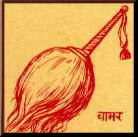 Control
of the Kasayas Control
of the Kasayas
Sramana
Bhagvan Mahavir has shown three methods of controlling the Kasayas.
1. Upasamana (Subsidence)
2. Ksayopasama (Destruction cum-subsidence)
3. Ksayikarana (Destruction)
The excitement should be so
suppressed, crushed and destroyed that it would not arise again.
This ‘upasamana’
is the method of supperession : to suppress partly and to destroy partly. To suppress and
destroy simultaneously is called ‘Kasayopasama’. In simple terms the path of the
Kasaya should be changed, e.g. anger should be conquered by pardon. Thus one should be
liberal. This is the method of change of course.
To make the Kasyas
completely weak, to destroy them, to dissolve them till they are completely wiped away is
called (Kasayikarana) or destruction.
This is the method of
dissolving or ‘destroying’.
The kasayas can be
subsided, subsideed-cum-detroyed or destroyed. To do this, the help of the antidotes of
Kasayas should be adopted. Bhavanas (reflections) are the antidotes of Kasyas. Kasayas can
be dissolved by making the Bhavanas strong and firm.
The antidote of anger is
peace.
The antidote or mana
(pride) is humility.
The antidote of deceit is
straightforwardness.
The antidote of greed is
contentment.
By strengthening the
samskaras (impressions) of peace, humility, straightforwardness and contentment, the
Kasayas are destroyed.
When the Kasayas are
completely destroyed, then and only then an aspirant becomes detached.
Literature
"For more information
and study, please read the six Karagranthas, Panca-Sangraha, Tattvarthasutra,
etc.
 Lesya Lesya
Karmic stain or aura.
Three words are very
well-known is religious literature - Rajoguna, Sattvguna and Tamoguna. While discussing
these words, it is said that the Rajoguna delights the mind by its charm and attractive
nature, its colour is therefore red; the mind becomes pure by the Sattvaguna, its colour
is therefore white. Knowledge is obscured by the Tamoguna, therefore its colour is black.
Indian thinkers have made
thought-provoking discussions about the conditions of the soul on the basis of the colour
of the Karmas.
The theory propounded by
Sramana Bhagvan Mahavira in this connection is known as the ‘Lesya theory’.
The feeling or thought
which arises in the mind of a soul by contact with material substance (pudgal-dravya) is
called ‘Lesya’. Lesyas are material and therefore they have colour, smell, taste
and touch. There are 6 Lesyas. They have been named on the basis of their colour.
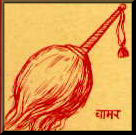 The
Nature and Form of Lesyas The
Nature and Form of Lesyas
1. Black Lesya
Colour darker than that of collirium, taste more bitter than that of neeem levaves; smell
many times worse than that of a dead serpent; touch harsher than that of the tougue of a
cow.
Characteristics - A man overcome with this lesyaa (mental
feeling) would have the most intense kasaya; would live promiscuous and uncontrolled
amorous life; would commit violence and killing, without being afraid of this or the other
world; would eat meat.
Fruit - It a man dies with such black feelings
and thoughts, he would go to the fifth, the sixth or the seventh hell by gradation.
2. Nila Lesya
Its colour is greenish like that of an emerald, taste bitter than that of a wild thorn;
its smell and touch are like those of the black Lesya.
Characteristics - Man overcome with this Lesya (mental
feeling) would be jealous and mean-minded, would himself not study and would not allow
others to study, he is given to worldly and sensual happiness.
Fruit - If a man dies with such green thoughts
and feelings, he would go to the third, the fourth or the fifth hell by gradation.
3. Kapota Lesya
Its colour is like that of the neck of a pigeon, taste more sour than that of an unripe
mango; its smell and touch are similar to those of the black lesya.
Characteristics - A man under influence of this lesya
(mental feeling) is a fault-finder; he is bitter, harsh in speech; discloses of faults of
others and covers his own faults; he is a thief and an adulterer.
Fruit - If a man dies with such feelings and
thoughts, he goes to the first, the second or the third hell by gradation.
4. Tejo Lesya
Its colour is red like that of red lead, its taste sour-sweet like that of a half - ripe
mango, smell fragrant like that of a flower and touch soft like that of butter.
Characteristics - A man under influence of this Lesya
(mental feeling) would be simple, afraid of sins, religious, firm of mind, humble and
just.
Fruit - If a man dies with such feelings and
thoughts, he would be born in the first or the second heaven by gradation.
5. Padma Lesya
Its colour is yellow like that of turmeric, taste sweet like that of honey, smell fragrant
like that of a flower and touch soft like that of butter.
Characteristics - A man under influence of this Lesya
(mental feeling) would make his Kasayas mild; would be moderate in speech, would speak
agreeable words and would be self-controlled.
Fruit -
A man dying with these feelings and these
thoughts would be born in the fifth heaven.
6. Sukla Lesya
Its colour is white like that of a conch, taste sweet like that of sugar, smell fragrant
like that of a rose and touch many times softer than that of butter.
Characteristics -
A man under influence of this Lesya would
be busy with religious practice, would make attachment and hatred milder, would be
self-controlled and have a mind, full of equipoise.
Fruit - A man dying with these thoughts and
feelings would be born in the sarvartha-siddha-vimana. (the highest heaven).
Out of these 6 Lesyas, the
first three are bad. They lead to evil results. They should be given up. The last three
lesyas are good and lead to good results. These three should be used more and more,
gradually and regularly.
Literature
Please read
‘Prajanapanasutra’ and ‘Uttardhyayana sutra’ for more information on
Lesyas.
|

